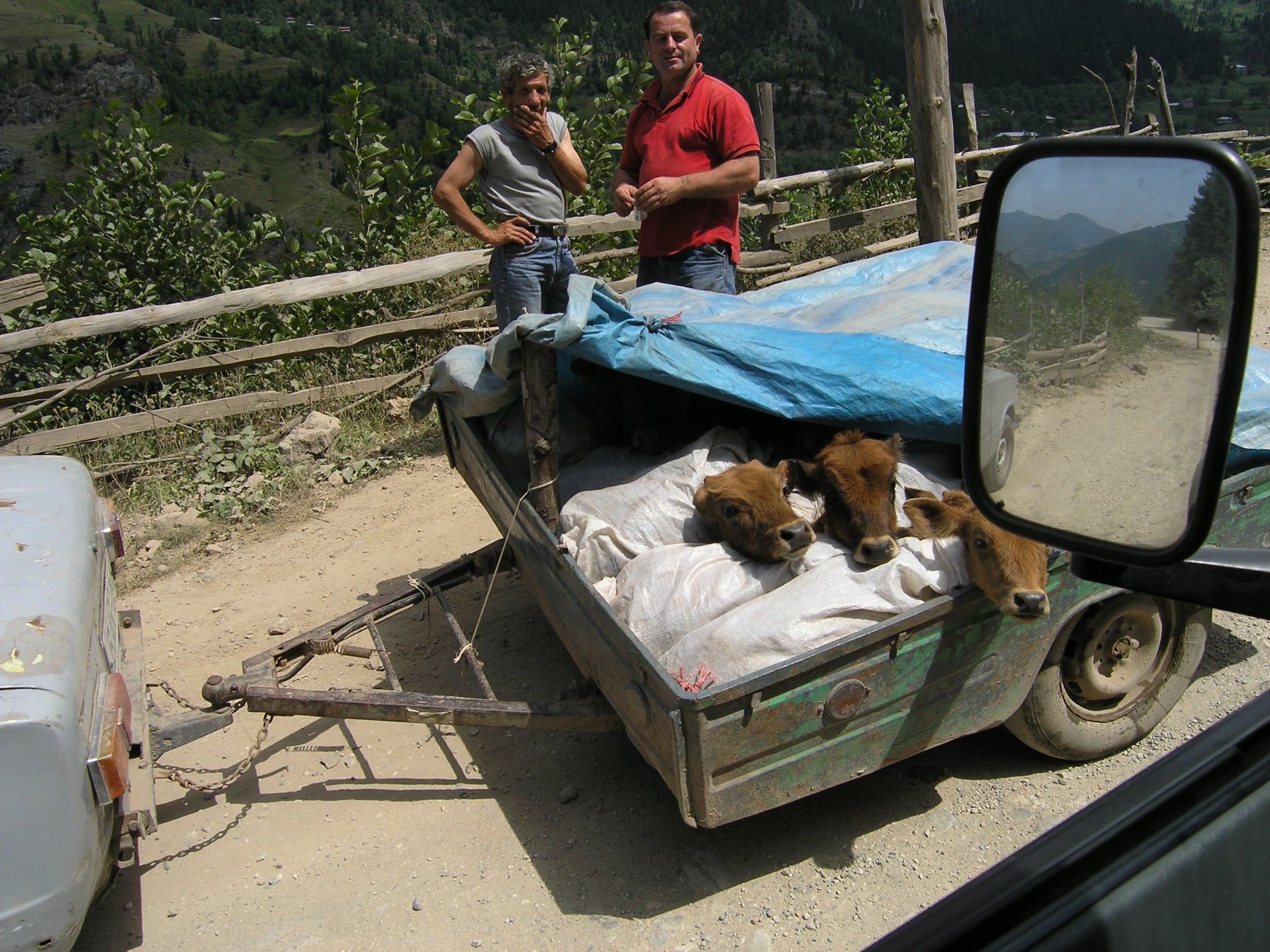The Journey is the Destination - Trip to Georgia
Written by Franz Weninger on the 28th of June 2019Tasting my first wines from Joško Gravner made me want to take a closer look at the “Cradle of Winemaking” – Georgia. In the summer of 2006 it was finally time. With a couple of detours, we drove to Georgia in a Land Rover Defender equipped with a rooftop tent.

In order to prepare myself, I kept in contact with a few journalists who helped me to get into contact with winemakers in Georgia.
The country was wonderful. No matter where we set up camp, in the river bed or high up in the Caucasus, people welcomed us warmheartedly, always helpful and curious, often providing us with food and drink.

However, when we finally reached the heart of Georgia’s wine country, Kakheti, and visited winemakers, we were very disappointed. Only one of the winemakers we met, Giorgi Dakishvili, was starting to experiment with amphorae in his little winery Vinoterra. And even he, having been educated in Western oenology, was also using barrels in his cellar. The large cellars, producing wine for the Russian market, were almost carbon copies of those in Moldavia. There was no traditional, hand-crafted amphorae wine to be found in 2006. We were excited to visit the Alaverdi monastery and were hoping to find the tradition of Georgian wine there, surviving protected within the monastery’s walls. But we discovered that even there, no amphorae were used, although they had at least begun excavating some.

We left a little disappointed. As I said, the country and the people were kind to us, and we learnt a lot about traditional cuisine, but unfortunately nothing about traditional winemaking. It was only in 2018, when I read Simon Woolf’s book “Amber Revolution” that it became clear to me that the use of amphorae had disappeared long before the Communist era. The German settlers, who reformed Georgian winemaking from the 18th century and beyond, did away with almost all amphorae by the year 1912. It’s a similar story in Hungary, where Germans also reformed winemaking more than 300 years ago.

Nevertheless, back home in Burgenland, I could not get Gravner’s idea out of my mind even though no traditional winemaking had survived in Georgia. Obsessed with the idea that wine develops and stabilises itself unaided, I looked for a potter who could make amphorae for me. I found him in the nearby town of Stoob and so, with the 2006 harvest, my fermentations in amphorae and concrete began. The experiences I have gained since then have reinforced my conviction that a miracle happens within wine.
A miracle where the rotting of grapes leads to the creation of a new product which stabilises itself. The role of the winemaker is to work on this miracle. Day after day.
more about Amphoras form Burgenland: Nina Wessely for "derstandard.at" google translated pdf